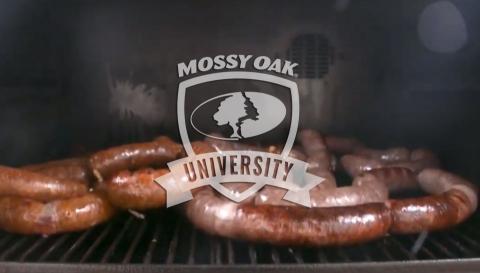Keri Butt | Originally published in GameKeepers: Farming for Wildlife Magazine
In my opinion, the whitetail deer is the most amazing creature God has ever graced our planet with. They are true “athletes” that boast an innate ability to overcome the most adverse of circumstances, regardless of geographical location or the level of difficulty Mother Nature has dealt them during any given season. With that said, it certainly isn’t to say that surviving is always a “walk in the deer woods” so to speak. In fact, when it comes right down to it, there aren’t many times throughout the course of a year in which whitetails experience a “low stress lifestyle.”
Winter, especially in the northern regions, is by far the cruelest few months on the whitetail deer’s calendar. There is no reprieve. There is no escape. Winter’s elements are unforgiving and harsh, and the challenges that accompany the plummeting temps are many and can wage an all-out battle as they beat relentlessly on the physical condition of deer herds. Fortunately, there’s a reason why whitetail behaviorist, author and photographer, Charlie Alsheimer, calls the whitetail, “Nature’s Superstar.” The species not only endures, but despite the strain of stressful circumstances, they somehow continue to thrive.
While the severity of conditions varies from region to region, and year to year, winter in the northern latitudes is for obvious reasons, the most taxing on whitetail deer herds. Their primal instincts will ultimately be put to the test, but then again, that’s why they demand so much respect. Deer are as savvy as they are adaptable, and during those months they are subjected to a host of brutal obstacles. In order to overcome, their primary focus becomes preserving and maintaining which is achieved by physically exerting as little energy as possible, literally.
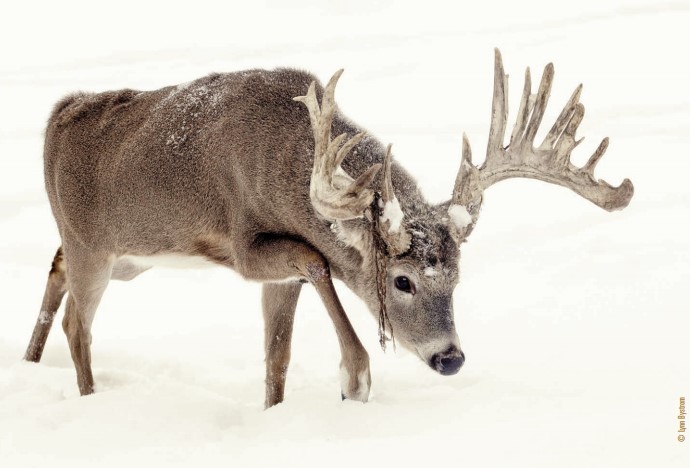
How Do Deer Survive the Winter?
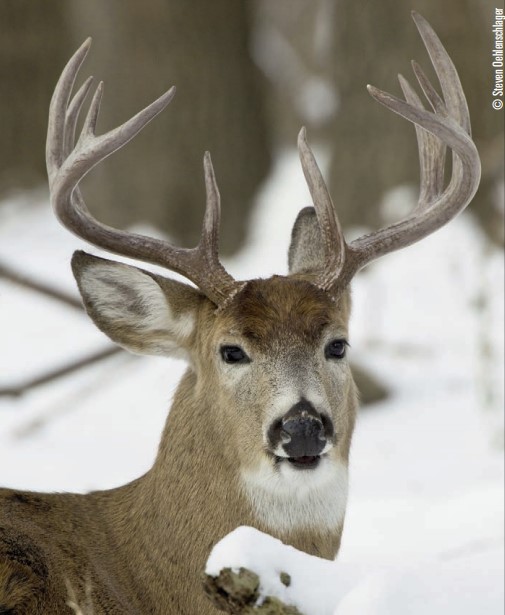
they are chasing does. While this does have a significant impact, the
biggest reason is because they actually stop eating for a period of about a
week to ten days. During this time they average only about 10% of what
they normally intake.
Probably the most important factor in determining if a deer will survive the winter or how they’ll fare by the end of the season is what state its physical condition is going into winter. In other words, were nutritional needs met during the previous months? For bucks, specifically those on top of the dominance hierarchy and/or the most active breeders, winter is a double whammy. By the end of the breeding season, the fat reserves and body mass bucks accrued during the summer and early fall have already been dramatically depleted. They have lost as much as 25 percent of their body weight due to the rigors of the rut in which food and rest were the last thing on their one-track minds. After all, in order to obtain the coveted right to breed, a buck must be on his game and on guard 24/7. By the time the rut is winding down, dominant breeding bucks are downright spent. Their physical condition is a far cry from what it was just six weeks ago. Unfortunately, recovery time is often cut short as old man winter begins to descend upon the deer woods rapidly.
As for the other deer; does, yearlings and young bucks, numerous factors influence their outcome at winter’s end such as; when were the yearlings born? Those born later into the fawning season already have one strike against them. Regardless of the timing of their birth though, yearlings are especially vulnerable during the winter if their mother didn’t receive adequate nutrition while pregnant or after their birth while she was lactating, trying to keep not only herself, but her fawns supplemented.
On a good and mild year consisting of ample rainfall and optimal deer densities, this typically isn’t a problem. However, when you have years like 2012 where drought plagued much of the country, it can be devastating to the herd. Forging into the bitterness of winter while malnourished is never good, fortunately most will prevail, thanks to their keen survival instincts and will, coupled with necessary changes that naturally occur—and sometimes a little luck.
Once the agricultural crops have been harvested, and cold weather ensues, there isn’t much for deer to forage on other than woody browse, particularly when snow and ice accumulate enough to where the deer aren’t able to reach the remnants from the previous growing season. In the northern climates, all deer will burn far more calories than they’re able to consume. Since their nutritional needs cannot be met, deer rely on the body fat they stored up while food sources were abundant. Hence the reason smaller deer, and deer that have burned through much of their store, are vastly more susceptible than larger bodied deer simply because they don’t have as much body fat available to convert to energy.
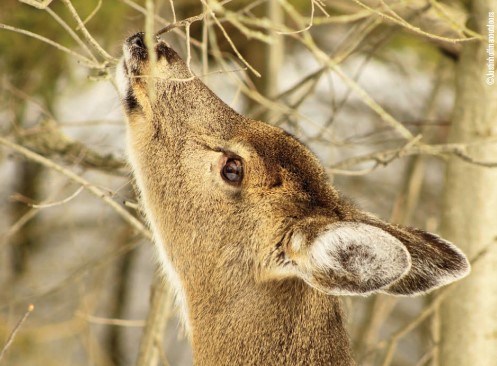
they do not have access to food plot crops or agricultural remnants they
rely on woody browse that takes so much energy for them to digest it’s
hardly worth the effort.
Smaller-bodied animals also lose body heat more quickly. Large body size conserves energy better because of a lower surface to mass ratio. This is why it’s vital that deer take advantage of the energy and carbohydrate rich foods when they’re available. This could be the difference between surviving the winter and meeting an untimely demise.
Biological, Physiological & Behavioral Changes
The bottom line is that as winter envelopes the northern regions, whitetail deer will be in a spiraling nutritional decline. For the majority, it’s virtually inconceivable to get the six pounds of intake their bodies require, and many will deplete as much as 25-30 percent of their body weight by the time spring rolls around again.
With the lack of nutritional forage and browse at their disposal, a whitetail’s body will undergo several biological, physiological, and behavior modifications throughout the cold season. It will be these survival mechanisms that are ultimately the catalyst for enduring the misery “old man winter” bestows upon them. Aside from the obvious stresses, an added reason it’s crucial to for a whitetail to conserve energy is due to the limited and “not so nutritious” woody browse that deer have no choice but to consume when there is nothing else available. It offers very little protein and is difficult to digest, therefore requiring more energy to digest, resulting in a lesser caloric intake.
Energy Conservation is Crucial
Under normal conditions, all deer go into winter with fat stores, some more than others. This extra “layer” is in essence, an indirect food supply for deer when their natural environment offers little else. However, and especially in extreme meteorological conditions, deer will undergo yet another phenomenon in order to retain as much of their fat reserves for as long as possible. It’s vital that deer conserve energy because if their activity level burns more calories than its body has to give during a drawn out period of time, death is surely imminent. With all things considered, in order to keep the ratio of calories-in to calories-out as stable as possible, another physiological modification must occur, resulting in a much lower metabolic rate.
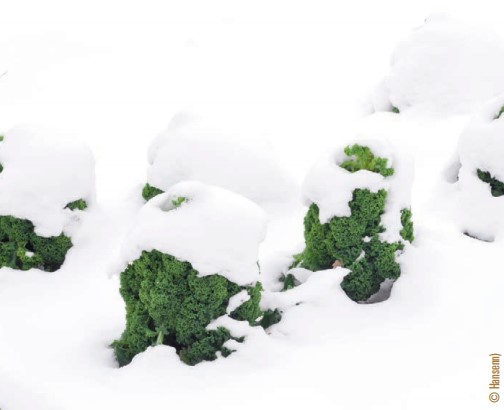
the food?" With snow depths of a couple inches or more, corn and
brassicas are the two best food plot choices. Brassicas, like this kale, can
withstand freezing temperatures, yet still remain green and palatable into
the winter.
Dr. Aaron N. Moen, Professor of Wildlife Ecology, Emeritus, at Cornell University in Ithaca, New York, has conducted over 5,000 hours of testing, observing and collecting data regarding changes in metabolism and energy output in whitetail deer. Throughout his career, Moen has published more than 100 scientific papers and several books.
The majority of Moen’s research was performed at the Wildlife Ecology Lab at Cornell University, in very large outdoor telemetry pens that afforded the same circumstances deer in the wild would encounter. The deer in Moen’s studies were given choices for food intake, bedding sites, activity periods, etc…all while transmitting vital signs like heart rate and respiration to EKG receivers. In other words, Moen says, “They could behave like free-ranging deer without even knowing they were transmitting information.”
To determine the gradual changes in metabolism that occur and the effects from said changes, Moen says that it is necessary to take into account the “cost of living. What is the bare minimum it takes to keep the animal going?” Like humans, deer have “daily and annual rhythms” that transform with varied movements, or inactivity. Heart rate and respiration also change throughout different activity cycles. For instance, was the deer running, eating, walking or resting? The milder the activity, the lower the respiration and heart rate, consequently, a lower metabolic rate and vice versa.
The only way deer can survive the harsh winters where food sources are limited, is to conserve as much energy as they can to ensure their fat reserves aren’t completely dissolved by winter’s end. The only way for them to do this is to naturally and gradually decrease their activity levels, thus resulting in a drop in temperature, respiration and heart rate. All things combined, a deer’s lowest metabolic rate is conducive to northern winter weather. Dr. Moen describes this as ecological metabolism in the wild.
Seasonal Timing
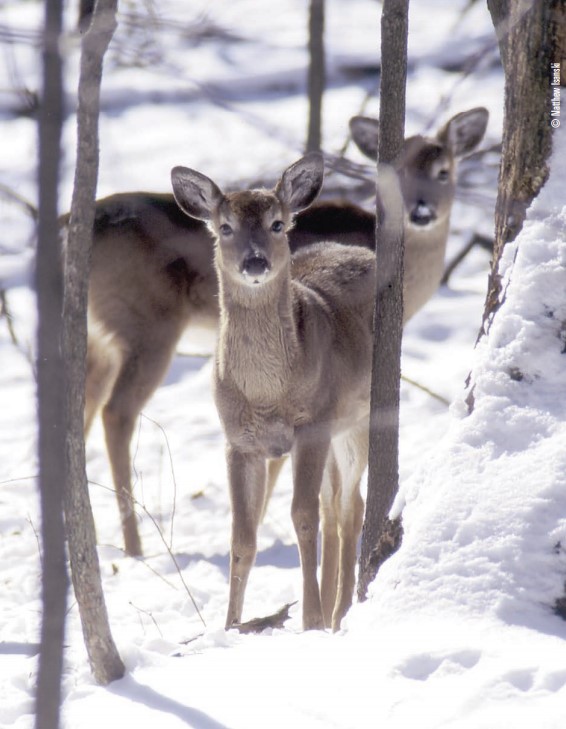
areas with thermal cover and protection from the wind.
Moen stresses that it’s important to take into account the timing of winter and spring in any given year, specifically if spring happens to arrive late. While many bucks head into winter already depleted and battered, and their situation getting worse before it gets better, a late spring is an obvious detriment to a buck that is barely hanging on. Does, on the other hand, have different problems to manage should a late spring occur.
Through his years of research, Moen has determined that a deer’s lowest metabolic rate is during the month of February. “Once they enter the last half of the gestation period, when fetal growth increases rapidly, the metabolic energy required by a doe then increases,” Moen says. Furthermore, Moen notes that milk production is very costly to does and their highest metabolic rate is halfway through the lactation period. If spring comes unseasonably late, and there isn’t an adequate amount of nutrient-rich forage available to compensate for and accompany this higher metabolic rate, extreme malnourishment can result. Sadly, if this transpires, her body may naturally absorb her unborn fawn(s).(Deer do not abort.)
The Amazing Whitetail Deer
Whitetail deer are nothing short of astounding, and their sheer ability to adapt is second to none. Even in the face of colossal habitat loss, a multitude of overpopulated predators and the frigid wrath of northern winters, they somehow continue to not just survive, but thrive. For that, whitetail deer deserve much recognition and respect.

















